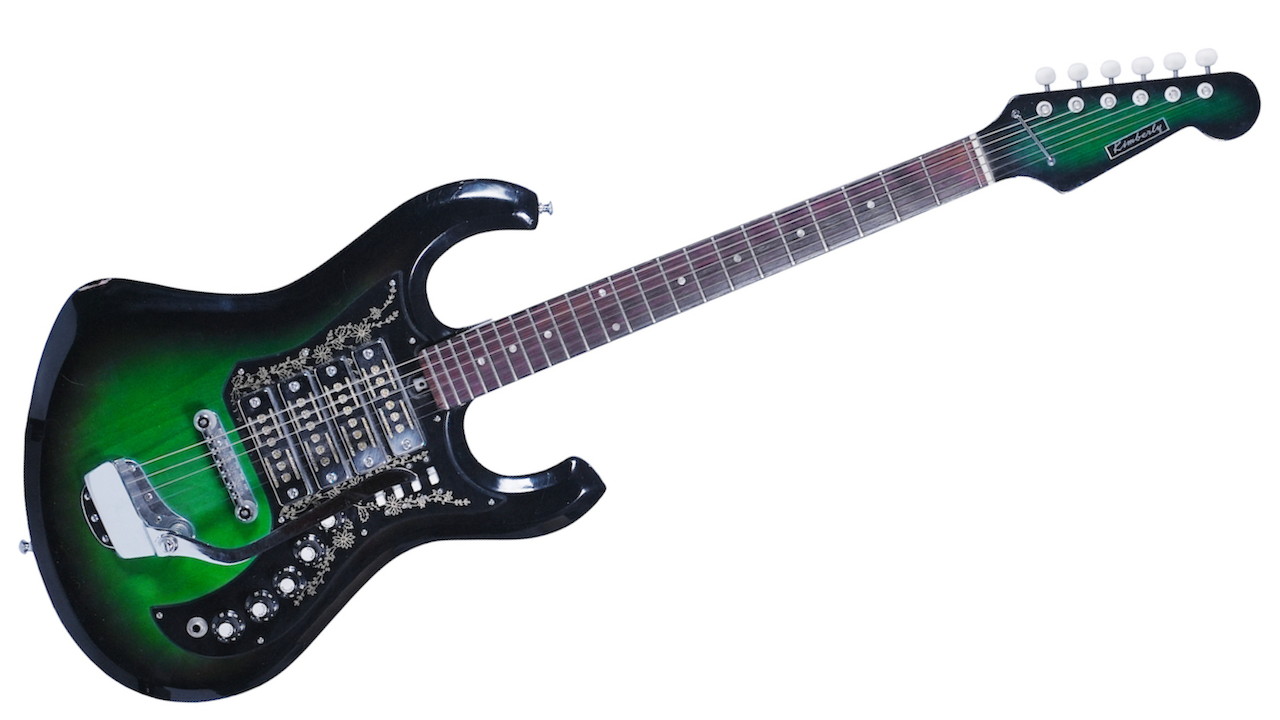"A guitar that sounds as aggressive as it looks, with four gold-foil pickups wired in series, resulting in a very hot output…" The green monster that is the 1970 Kimberly Deluxe
More attitude than Godzilla, it's a mean-in-green Japan-made classic

It says "Kimberly" on the headstock, so why does it look more like a Teisco? But if it’s a Teisco, why does it play and sound so nice and look so cool? Because, technically, this guitar is neither a Kimberly nor a Teisco. It was actually made in the Kawai factory shortly after the company purchased Teisco and its different nameplates circa 1967.
In fact, most collectors of Teisco guitars know the late-’60s specimens will likely play better than the average department store guitar. Even so, the name game for ’60s-era Japanese and European guitars gets tricky due to the many brands that wholesalers and importers attached to their models. For example, this Deluxe is often referred to as the Bison because it resembles the English-made Burns Bison, which was also offered in a green finish and had four pickups. But whatever you call it, the Kimberly Deluxe is one of the cooler and more sought-after models of its ilk.
Weird factor
Green guitars never sell well, but that didn’t stop Kawai from going all-in on this green machine. Indeed, the color is the most striking thing here. Still, it’s hard to overlook all those pickups, not to mention the rather aggressive body shape.

Playability and sound
The Kimberly Deluxe has a lot going for it. The maple neck sports a rosewood fingerboard with 22 frets and is slim, friendly and fast. The four fabled gold-foil pickups are wired in series, resulting in a very hot output once you start combining pickups. Each has a white kill switch that allows for all the variations and provides a great way to dial in the perfect sound or add a boost on the fly. Additionally, each pickup has a dedicated volume knob, but there is only one global tone knob.
Light, easy to play and has tone for days.
The roller bridge is a nice addition that helps ensure that the vibrato bar comes back smoothly and accurately, but, sadly, it doesn’t allow individual string intonation. Fortunately, this guitar stays pretty true up and down the neck. With a clean setting, the tones are fairly nondescript, but with overdrive or distortion, those gold-foils scream in a very rock-and-roll way.
I got this guitar from my buddy Dave Ristrum, who has played in Luke Bryan’s band, and he used it for slide, in open tuning, with overdrive. I would be remiss if I didn’t mention the lack of string tension. The “towel rack” string retainer behind the nut doesn’t provide quite enough force, a common problem on M.I.J. guitars from this period. There is a definite lack of sustain, which is another reason to use it with some overdrive or light compression.
Value
The 1970 catalog shows this guitar retailed for just $44.95, with the case setting you back another nine bucks. The street price as of this writing is between $600 and $1,200, which is a bargain. Heck, the pickups alone are easily worth $125 each.
All the latest guitar news, interviews, lessons, reviews, deals and more, direct to your inbox!
Why it rules
This guitar sounds as aggressive as it looks. It’s light, easy to play and has tone for days.
